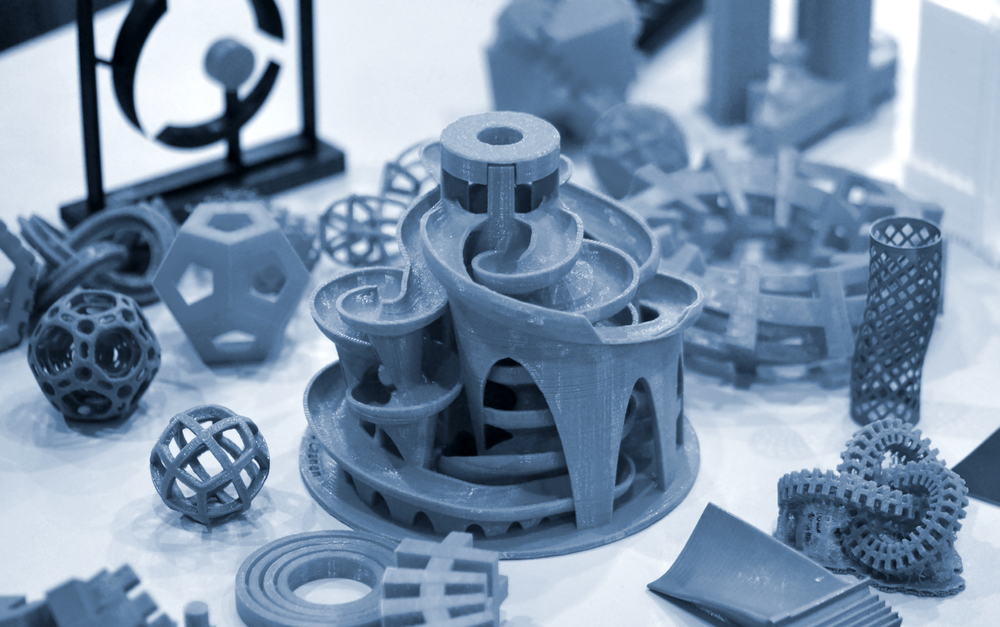Customers are more environmentally aware and place greater value on sustainable consumer goods and businesses that adopt environmentally-friendly manufacturing strategies. Recent advancements in 3D printing polymers with bio-based materials or resins have made manufacturing more sustainable. Supporting high-mix, low-volume production for a wide range of products, including customizable consumer goods, medical devices, and dental devices. Below, we discuss the environmental sustainability of 3D printing and how the benefits of additive manufacturing facilitate sustainable manufacturing of fast-paced consumer goods, including dental appliances, eyewear, athletic footwear, medical devices, high-end jewelry, and others.

Benefits of 3D Printing as a Manufacturing Method for Sustainability
In a traditional high-volume manufacturing environment that involves several assembly steps, higher tooling costs, elaborate post-processing, and minimum order quantities (MOQs), the production of complex, customized, and personalized products are challenging. 3D printing lets companies consider the production of multiple variants of a single product or multiple products in a single batch, thereby improving production efficiency and eliminating tooling costs.
Additive manufacturing makes the entire production process more material-efficient and sustainable through on-demand printing that utilizes only the necessary amount of materials required to create 3D printed objects and enables fabrication as a single piece. The following are some of the key benefits of the environmental sustainability of 3D printing consumer goods.
Reduce Excess Inventory
Effective inventory planning ensures sufficient product stock to always meet customer demand. This has been increasingly challenging with unexpected supply chain disruptions and longer than anticipated shipping times. Companies may order more inventory than needed to minimize the impact of delays. However, this reduces cash flow and increases the risk from inventory that is no longer needed i.e., deadstock.
3D printing enables just-in-time or on-demand manufacturing to reduce risks from excess inventory. Instead of producing and holding large volumes of product, the manufacturer only starts production after an order is received from the customer. With the ability to produce multiple different products without retooling time or costs, sites can more easily support on-demand manufacturing and reduce risk from excess inventory.
Reduce Material Waste
A significant amount of waste byproducts is common with conventional manufacturing processes such as CNC milling, casting, and injection molding. Additive manufacturing reduces scrap rates, and for resin printing, there is minimal material waste from support structures. Direct 3D printing of consumer goods, dental, and medical products are more efficient. For example, directly printing dental aligners and retainers eliminates dental molds for thermoforming, reducing material waste by up to 80%. The outstanding durability of 3D printable materials makes products such as athletic shoes last two to three times longer than traditional counterparts made with foam. The extended lifespan and improved performance of 3D printing consumer goods reduce the number of replacements and landfill waste.
Reduce Carbon Emissions During Manufacturing
3D printing simplifies the manufacturing process by reducing the number of steps required to print a finished product. By eliminating multiple test runs and tooling modifications to create the prototype in a production environment, and consolidating parts of a finished product, 3D printing minimizes production steps, labor, and material waste. A more efficient production process translates to a significant reduction of carbon emissions in the industrial manufacturing process.
Reuse Raw Materials
Leading polyurethane materials used in additive manufacturing of athletic shoes, medical devices, and other products can offer superior resilience and tear and bending resistance. Highly recyclable and reusable, polyurethane can enable manufacturers to create closed-loop supply chains for 3D printing of consumer goods – making new products entirely from recycled materials.
Biodegradable Materials
Material science for 3D printing technology is continually evolving, such as increasing the percentage of sustainable base materials ( currently 10-20%). Biodegradable 3D printable materials can match or exceed the mechanical properties of traditional materials while also offering the advantages of additive manufacturing, including design freedom, simplifying the production process, and greater agility.
Companies need to design products holistically for them to be completely biodegradable. For example, shoe midsoles may not be biodegradable if they use glue to adhere the midsoles to the shoe upper. 3D printing an entire shoe or designing shoe assembly without glue are ways to overcome the challenges with common manufacturing adhesives.
As more products are made with biodegradable materials, it will reduce environmental waste and improve the sustainability of products across multiple industries, including the fast-moving fashion industry.
Localized Manufacturing
Many companies are moving away from traditional and centralized large-scale overseas manufacturing of consumer goods to deploying several small smart factories closer to the target market. Bringing manufacturing closer to the end-user can help companies understand and better respond/scale to the local market demands, such as specific products or design variations. Localizing manufacturing can reduce logistic complexities and miles traveled in supply chains, decreasing the carbon footprint for companies.
Manufacturers need an integrated industrial 3D printing solution — a combination of hardware, software, and materials — to realize the benefits of environmental sustainability of additive manufacturing and create eco-friendly consumer goods.
Integrating 3D Printing Solutions to Achieve Sustainability in Supply Chains
LuxCreo’s patented 3D printing LEAP (Light Enabled Additive Production) technology significantly reduces material, labor, and production costs. Companies can scale their production through manufacturing-connected 3D printers powered by intuitive cloud software that creates a fast and simplified digitized production workflow. The high-performance 3D printing materials have mechanical properties that are comparable to, or better than, traditional materials as well as enable accurate and cost-effective printing of customized consumer goods.
The LuxCreo on-demand, cloud-connected smart factory production service offers agile and versatile manufacturing to help companies easily increase their production capacities or agility without increasing capital investments. With our comprehensive and advanced 3D printing systems, materials, and smart factory services, companies can implement new design and production strategies while achieving greater environmental sustainability.
For more information on how LuxCreo’s advanced solutions can help achieve the environmental sustainability of 3D printing, contact us or call (650) 336-0888.